Today we are exploring the Most Popular Types of Blue Birds with complete detail. Bluebirds have a special place in the hearts of bird enthusiasts and nature lovers worldwide. Their vibrant blue plumage and melodious songs make them captivating to behold and delightful to listen to. In this comprehensive article, we will journey through the world of blue birds, discovering 17 distinct types that grace our skies. From the majestic Mountain Bluebird to the charming California Scrub-Jay, each species possesses unique characteristics and stories to share. Let’s take flight and delve into the captivating realm of these mesmerizing creatures.
1. Mountain Bluebird: The Azure Gem of the Rockies
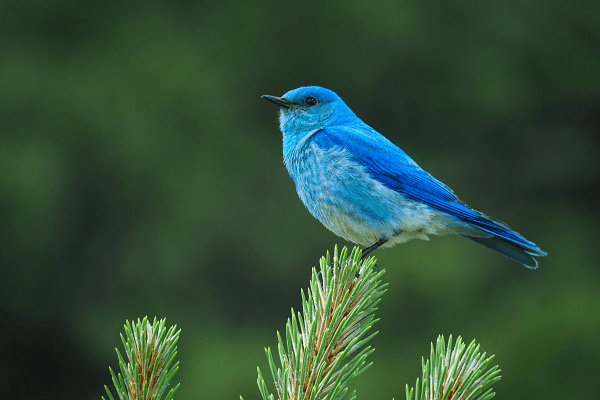
Appearance and Habitat The Mountain Bluebird, a true gem of the Rockies, boasts stunning azure feathers that contrast vividly against the backdrop of its mountainous habitat. This bird prefers open spaces such as grasslands and meadows.
Behaviours and Diet Known for their cheerful calls, Mountain Bluebirds are skilled insect hunters. They perch on elevated spots, scanning the ground for insects to catch mid-air.
Conservation Status While their population is generally stable, Mountain Bluebirds still face threats from habitat loss and competition with non-native species.
2. Steller’s Jay: A Bold and Beautiful Avian
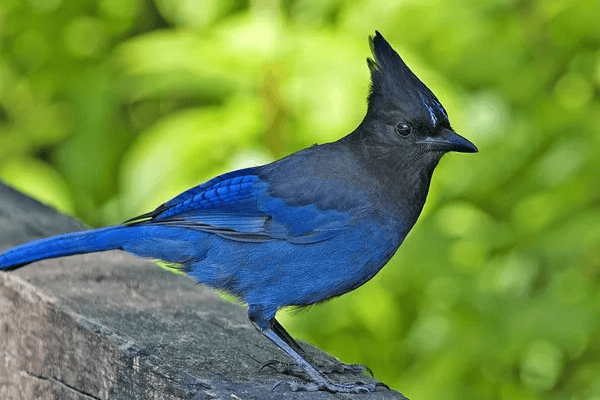
Distinctive Features The Steller’s Jay is recognized for its striking blue feathers and striking black crest. Its bold and curious nature often leads it to interact with humans.
Range and Habitat Found in western North America’s forests, Steller’s Jays are expert mimics and can even imitate other birds and animals.
Social Behavior These jays are highly social and often travel in family groups, using their intelligence to find food and outsmart predators.
3. Cerulean Warbler: A Tiny Blue Songster
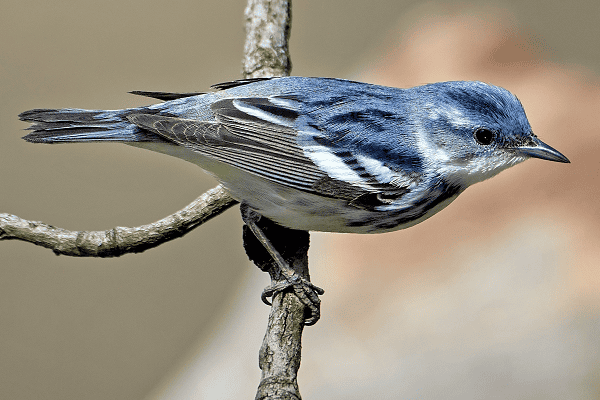
Migratory Patterns The Cerulean Warbler embarks on one of the longest migrations of any songbird, travelling thousands of miles between its breeding and wintering grounds.
Breeding Habits These warblers are known for building intricate cup-shaped nests in the treetops, often using spider silk to secure their nests.
Threats and Conservation Habitat loss in their breeding and wintering ranges pose a significant threat to the Cerulean Warbler’s survival.
4. Blue Jays: Colorful Corvids of North America
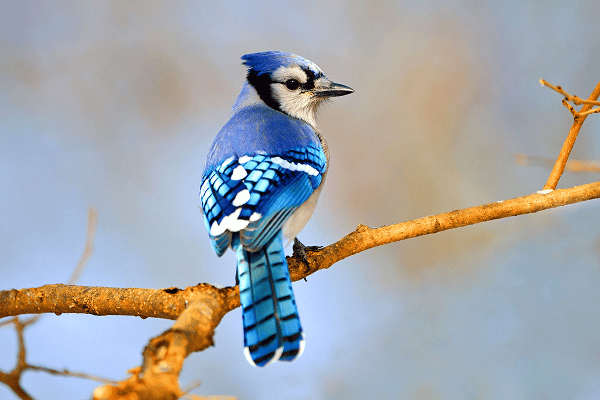
Physical Characteristics Blue Jays are recognized by their vibrant blue feathers, distinctive crests, and white faces. They are expert imitators of other bird calls and even human sounds.
Vocalizations and Intelligence Apart from their natural calls, Blue Jays can mimic hawk calls as a defence mechanism to fool other birds. They are highly intelligent and can solve complex problems to obtain food.
Interaction with Humans These corvids are often found near human habitation, which has led to both positive and negative interactions.
5. Eastern Bluebird: Symbol of Hope and Happiness
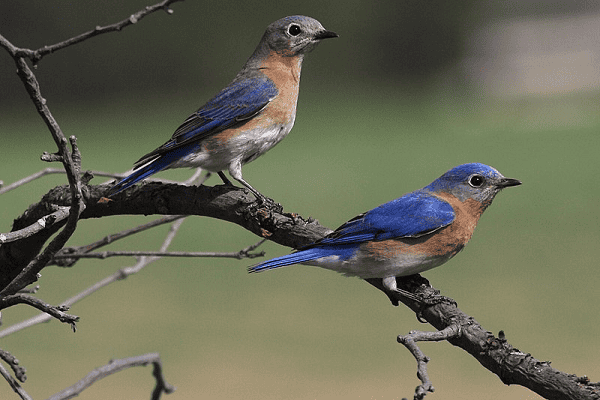
Nesting and Breeding The Eastern Bluebird is known for its association with nest boxes provided by humans. These boxes help mitigate the loss of natural nesting sites.
Diet and Foraging Their diet primarily consists of insects, which makes them beneficial for pest control in gardens and farms.
Bluebird Trails People across North America participate in creating and maintaining bluebird trails, contributing to the conservation of these iconic birds.
Related Article: The Mysterious Blue Cardinal: Fact or Fiction?
6. Indigo Bunting: A Brilliant Splash of Blue
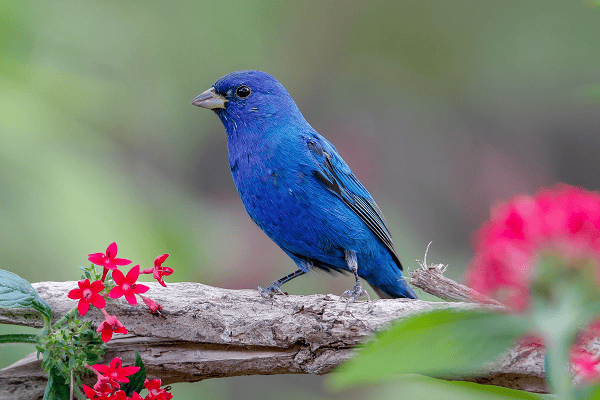
Breeding and Migratory Behavior Indigo Buntings are renowned for their dazzling blue feathers, which appear black in certain lighting conditions. They undertake a remarkable migration to their breeding grounds.
Habitat and Range These buntings prefer brushy areas near open fields and forests, making them a stunning sight against natural landscapes.
The “Sky-Dancing” Display Male Indigo Buntings engage in an aerial display of fluttering flight during courtship, showcasing their vibrant blue plumage.
Stay tuned for the continuation of this article, where we will explore more fascinating types of blue birds and learn about their habits, habitats, and conservation efforts.
7. Blue Grosbeak: A Musical Marvel
Song and Communication Blue Grosbeaks are not only admired for their rich blue colour but also for their melodious songs, which often resonate throughout their habitat.
Breeding Season During the breeding season, males sing to attract females and establish territories. Their varied and enchanting songs make them a true musical marvel.
Conservation Efforts Maintaining shrubby habitats is crucial for these birds, as they rely on them for nesting and food sources. Conservation efforts target preserving these habitats.
8. Lazuli Bunting: A Transcontinental Traveler
Summer Breeding Grounds Lazuli Buntings are known for their vibrant blue and orange plumage. They breed across North America, from the western United States to Canada.
Feeding Habits These buntings primarily consume insects during the breeding season and switch to seeds during migration and winter.
Cultural Significance In Native American cultures, Lazuli Buntings are seen as symbols of spirituality and communication with the spirit world.
We also Updated: Purple Bird Species That Will Leave You in Awe!
9. Blue Bunting: A Rare and Enigmatic Beauty
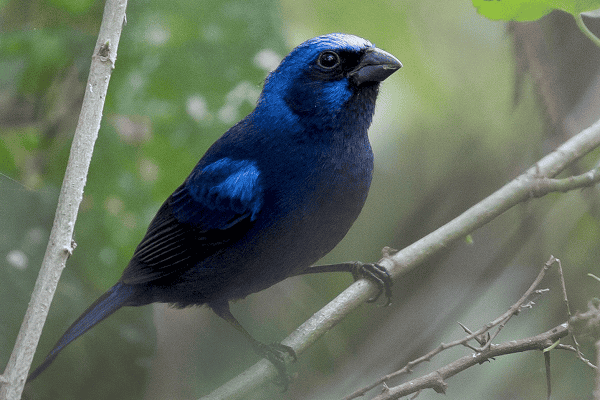
Elusive Sightings The Blue Bunting, a rare and mysterious bird, is challenging to spot due to its elusive behaviour and remote habitat.
Geographic Distribution Found mainly in Mexico, this species occasionally appears in the southwestern United States.
Importance of Documentation Documenting sightings and behaviours of the Blue Bunting is crucial for understanding and conserving this enigmatic beauty.
10. Belted Kingfisher: Majesty in Flight
Fishing Techniques Belted Kingfishers are skilled anglers that hunt for fish by hovering above water bodies before diving headfirst to catch their prey.
Nesting and Reproduction These birds create tunnel-like nests in earth banks near water sources, where they lay their eggs and raise their young.
Habitat Preservation Protecting water bodies and providing suitable nesting sites are essential for preserving Belted Kingfisher populations.
11. Tree Swallows: Graceful Aerial Acrobats
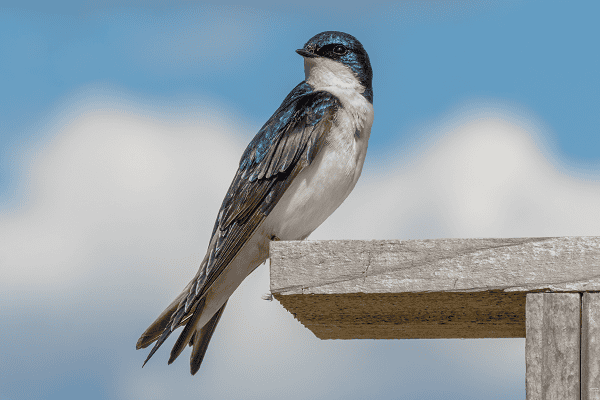
Nesting and Family Dynamics Tree Swallows are known for their graceful flight and elegant manoeuvres. They nest in cavities, often utilizing artificial nest boxes.
Migration Patterns These swallows undertake long migrations between their breeding and wintering grounds, showcasing their remarkable endurance.
Role in Insect Control Tree Swallows is valuable in controlling insect populations, making them beneficial for agriculture and ecosystems.
12. Little Blue Heron: Elegant Wader of Wetlands
Plumage and Identification The Little Blue Heron, despite its name, display a range of colours as it matures. Its slate-blue feathers and slender build distinguish it.
Feeding Behavior These herons wade in shallow waters, using their patience and precision to catch fish and other aquatic creatures.
Wetland Conservation Conserving wetlands is vital for the survival of the Little Blue Heron and many other bird species that rely on these habitats.
Related Article: Woodpeckers in Florida
13. Blue-Gray Gnatcatcher: Tiny Warrior Against Pests
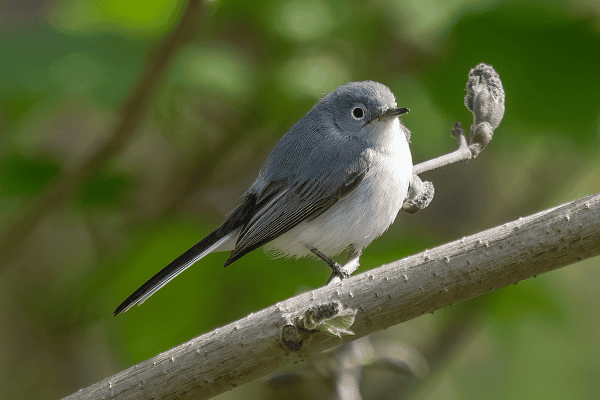
Foraging Techniques The Blue-Gray Gnatcatcher is a small, active bird that hunts insects by gleaning them from leaves and branches.
Nest Construction Known for their intricately woven nests, these birds often incorporate spider silk to give their nests added flexibility.
Cooperative Breeding These birds sometimes engage in cooperative breeding, with other family members helping to raise the young.
14. Blue Rock Thrush: Melodious Singer of Old World
Global Distribution The Blue Rock Thrush is a striking bird found across Europe, Asia, and North Africa, often inhabiting rocky landscapes.
Vocal Repertoire Males are known for their melodious songs that echo through their rocky habitats, enhancing their appeal.
Urban Adaptation In some areas, Blue Rock Thrushes have adapted to urban environments, using buildings and structures for nesting.
15. Blue Mockingbird: Imitator of Nature’s Symphony
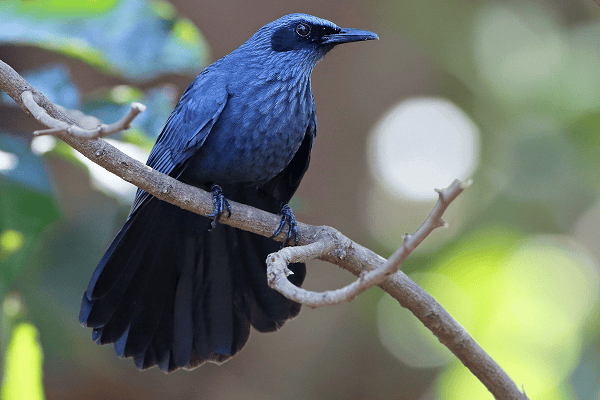
Vocal Mimicry As the name suggests, the Blue Mockingbird excels in imitating the songs of other bird species, creating a symphony of sounds.
Ecological Role By imitating the calls of other birds, Blue Mockingbirds contribute to the balance of the ecosystem and aid in pollination.
Intricate Nesting These birds construct well-hidden nests using materials like twigs, leaves, and grass, showcasing their resourcefulness.
Must Visit: Top 10 Largest Birds of Prey
16. Northern Parula: A Warbler with a Green Necklace
Breeding Habitat The Northern Parula, a small warbler, nests in tree canopies and is recognizable by the “green necklace” of feathers across its throat.
Feeding Preferences Their diet includes insects and spiders, making them active foragers as they glean their food from leaves and branches.
Threats and Conservation Habitat loss due to deforestation pose a threat to the Northern Parula, emphasizing the importance of preserving forests.
17. California Scrub-Jay: Charismatic Corvid of the West
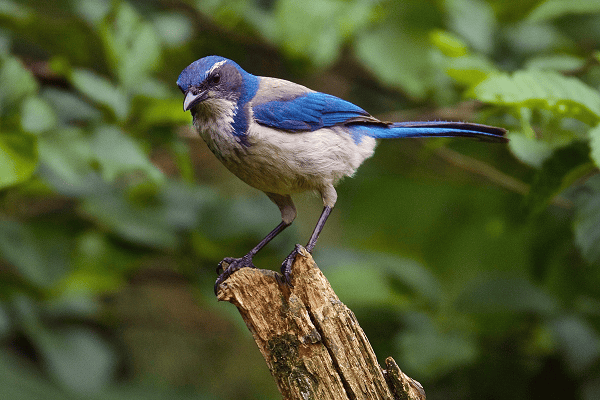
Habitat and Behavior The California Scrub-Jay thrives in scrubland habitats of western North America and is known for its curious and intelligent behaviour.
Diet and Foraging Strategies These corvids have a diverse diet that includes insects, seeds, and even small vertebrates. They also cache food for later consumption.
Role in Ecosystem By dispersing seeds and controlling insect populations, California Scrub-Jays play a crucial role in maintaining ecosystem balance.
FAQs:
What is called a bluebird?
A bluebird is a small bird known for its vibrant blue plumage.
What birds have blue?
Several birds have blue colouring, including bluebirds, blue jays, peacocks, and certain species of parrots.
What does a bluebird symbolize?
Bluebirds symbolize happiness, joy, and good luck in many cultures. They are often associated with positivity and optimism.
Are bluebirds good luck?
Yes, bluebirds are often considered symbols of good luck and positive outcomes.
Which bird is lucky?
The concept of a “lucky” bird can vary between cultures, but bluebirds, robins, and cranes are often considered lucky in various traditions.
What is the benefit of bluebirds? Bluebirds play an important role in ecosystems by controlling insect populations, which can positively affect plant health and other bird species.
